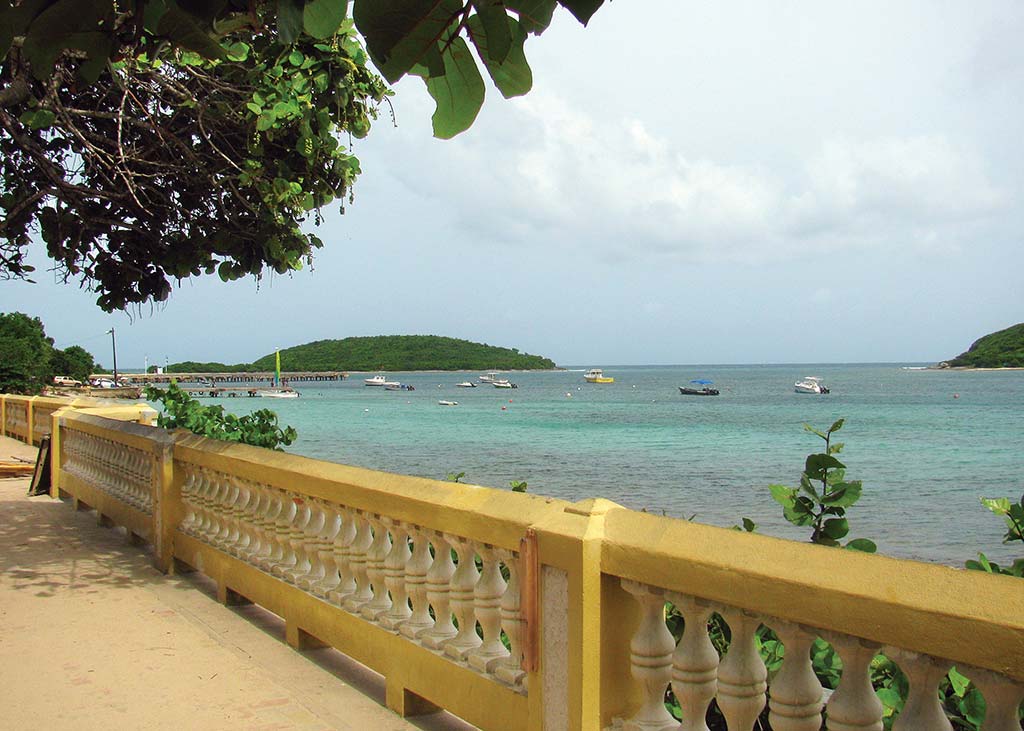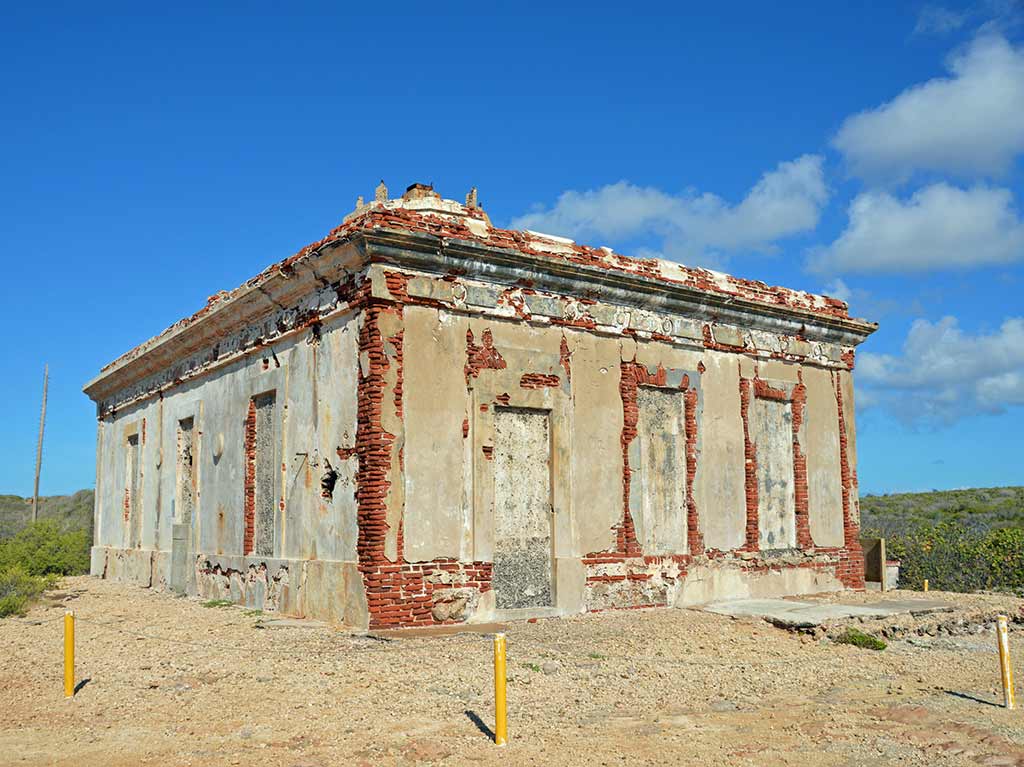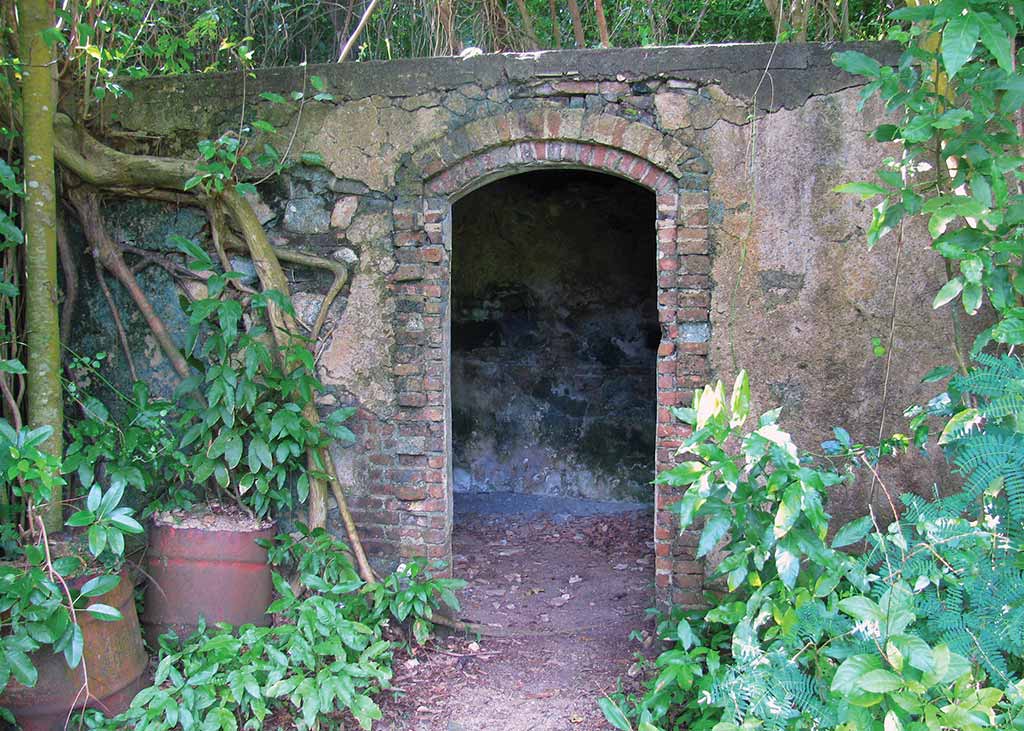From the overgrown ruins of a sugar mill to a restored 19th century Spanish fort to an incredible bioluminescent bay, there’s plenty to see on Vieques–and most you can do for free.

The malecón in Esperanza. Photo © Suzanne Van Atten.
Built between 1845 and 1855, El Fortín Conde de Mirasol was the last fort built by the Spanish in the New World. Never attacked or used in battle, it originally housed Spanish troops and later became a jail and execution site. Among those incarcerated here were fugitive slaves from local sugar plantations and political prisoners who sought Puerto Rico’s independence from Spain. Later it was used as a municipal jail until the 1940s, when it was closed and fell into disrepair. In 1989 the Institute of Puerto Rico began restoration of the fort, which still has its original brick floors, exterior walls, and hardwood beams.
Some of Vieques’s finest primitive beaches are located in the refuge.Today the fort is home to the Vieques Museum of Art and History (Fort Count Mirasol, Carr. 989, Isabel Segunda, 787/741-1717, Wed.-Sun. 10am-4pm, free). It houses the Hombre de Puerto Ferro, the 4,000-year-old remains of a man whose body was discovered in an archaeological site near Esperanza. Other exhibits are dedicated to the island’s indigenous people, its historic sugarcane industry, and local artists. It also contains the Vieques Historic Archives.Often referred to as Vieques Stonehenge, the archaeological site of Hombre de Puerto Ferro is on the south side of the island off Carretera 997. About a quarter-mile east of the entrance to Sun Bay, turn inland onto a dirt road that takes you to the fenced-off site. Giant boulders mark the spot where the remains were excavated in 1990. Some believe the boulders were placed around the grave; others say it’s a natural phenomenon.

Puerto Ferro Berdiales Lighthouse Ruins Archaeological Site. Photo © Michael Hopkins/123rf.
Mosquito Bay (off Carr. 997, near Esperanza, 787/741-0800) is a naturally occurring bioluminescent bay that attracts visitors to Vieques from around the world who paddle kayaks into the water at night to observe the bay’s electric glow. Several outfitters in Vieques provide night excursions on kayaks or an electric pontoon boat for an up-close experience with the phenomenon. For best results, plan your trip during a new moon, when the bay glows brightest.
Built in the late 1800s, El Faro Punta Mulas (Calle Plinio Peterson, north of Isabel Segunda, 787/741-3141) looks less like a lighthouse and more like a modest, rectangular government building with a large light on top of it. It’s still operational today but visitors can’t enter the lighthouse.
Tucked between the bars and restaurants across from the malecón in Esperanza, Vieques Conservation and Historical Trust (138 Calle Flamboyan, Esperanza, 787/741-8850, daily 9am-5pm, free but donations accepted) is a small institution with a big mission to help protect and preserve the island’s natural habitat. It has been involved in a research project with the Scripps Institute of Oceanography in San Diego, California on the effect of light pollution on Mosquito Bay. It also runs a children’s summer camp and leads tours to the Sugar Mill Ruins. Stop in to take a look at the aquariums containing local sea creatures or pick up some information on the island.
What was once the site of the U.S. Navy’s Camp Garcia is now the Refugio Nacional de Vida Silvestre de Vieques/National Wildlife Refuge (Carr. 997, halfway between Isabel Segunda and Esperanza, 787/741-2138, daily 6am-7:30pm May-Aug., daily 6am-6:30pm Sept.-Apr., free), the largest wildlife refuge in the Caribbean. Encompassing 60 percent of the island, the 17,770-acre refuge contains a variety of natural habitats, including beaches, mangrove forests, and subtropical dry forest. It is home to four endangered plants and 10 endangered animals, including the brown pelican and several species of sea turtles. Some of Vieques’s finest primitive beaches are located in the refuge, including Playa Caracas/Red Beach, Playa Pata Prieta, Bahía de la Chiva/Blue Beach, and Playa Plata/Orchid Beach.
The Sugar Mill Ruins (off Carr. 201 near Playa Grande, west of Esperanza, 787/741-8850, free) are what is left of Playa Grande Mill, one of four sugar mills that operated in Vieques beginning in the 1830s. It was closed in the early 1940s when the Navy arrived, and much of what was left has begun to be reclaimed by Mother Nature, but there are still about a half-dozen buildings remaining. Long pants, hiking shoes, and bug spray are recommended. Much of the site is thick with vegetation. Look for the homemade sign marking the site.

Nature has begun to reclaim the sugar mill ruins in Vieques. Photo © Suzanne Van Atten.
Excerpted from the Fourth Edition of Moon Puerto Rico.